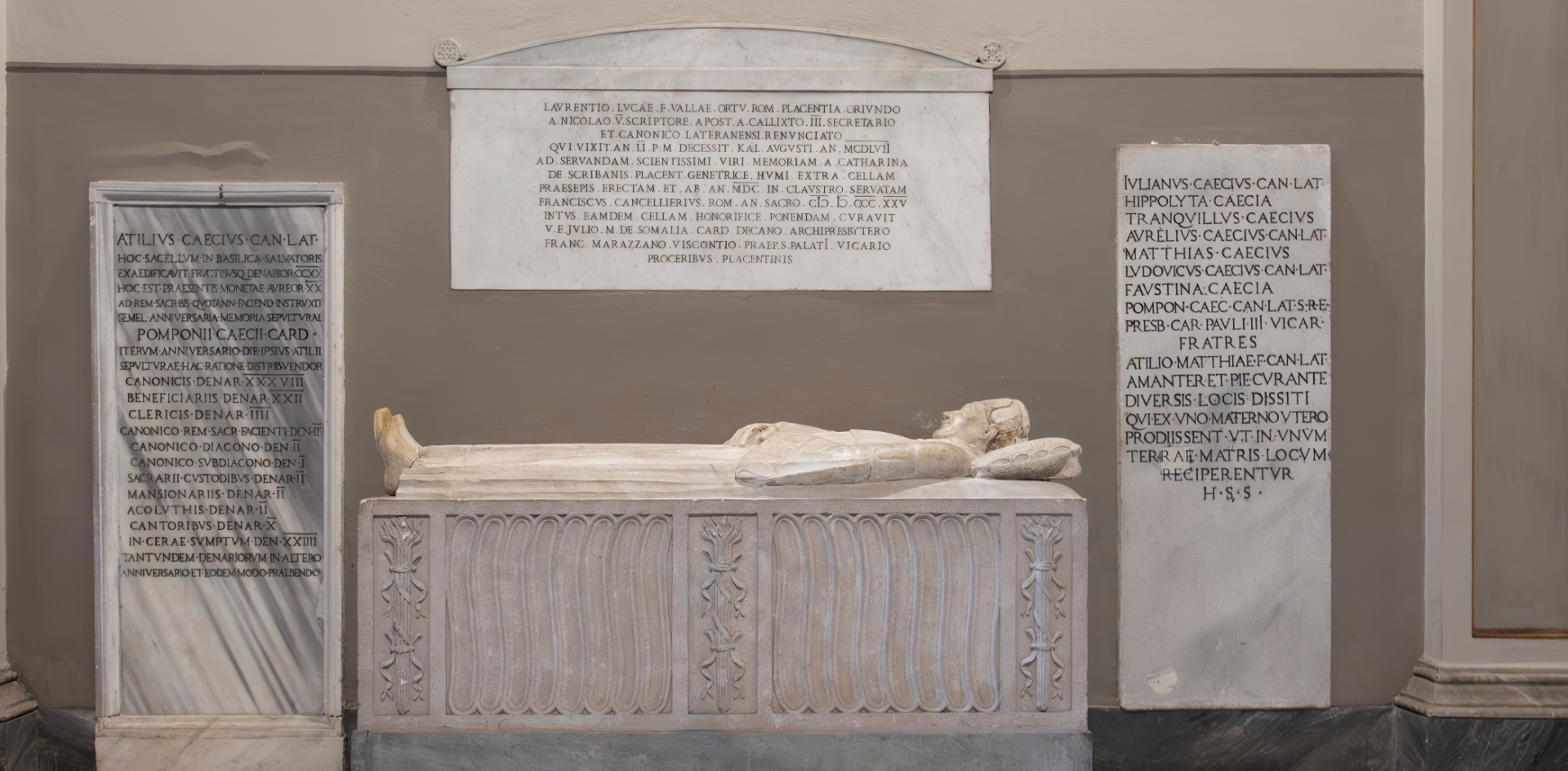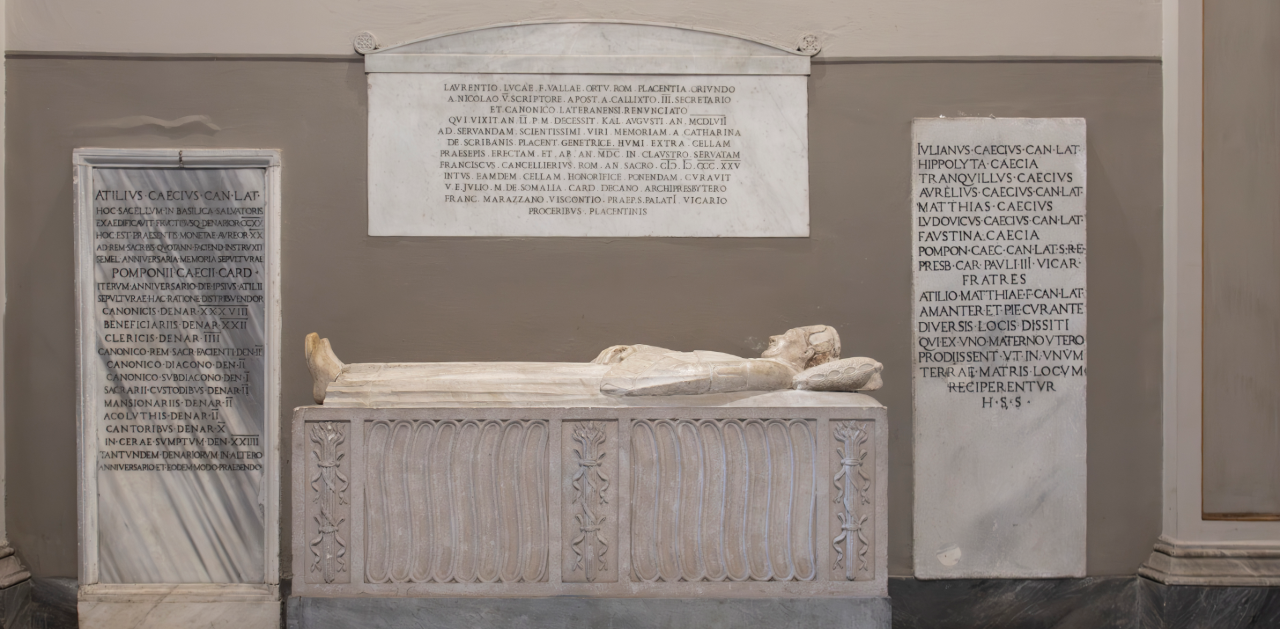Lorenzo Valla is known for having demonstrated that the so-called Donation of Constantine was not an imperial age document, but rather an early Medieval text. Valla was far from being an anti-clerical humanist; so much so that he died at Saint John Lateran as a canon of the basilica, appointed to the role by the Pope. His tombstone has now been relocated to the Chapel of the Crucifix in the right transept.
Today it appears clear that the Donation of Constantine was not a fake created to justify a temporal power extorted with fraud or violence, but rather a legend that embellished, in the mid-eighteenth century, the fact of the civil power that the bishop of Rome had necessarily assumed, since the emperor of Constantinople no longer had the powers to come to Rome's aid, having been besieged on several occasions by Avars, Arabs, and barbarians.
In 751, when Ravenna, the city where the representative of the imperial power resided, fell into the hands of the Lombards, Rome effectively became a city independent from the ancient Roman empire. But this process has neither a historically identifiable date, nor did the new territorial entity have a new name to characterize it, as temporal authority grew over the years as historical necessity imposed itself on the city. There was no longer anyone in Rome who could not only defend the city, but also be a point of reference for the population, except for the pontiff: the Donation of Constantine turned this fact into legend.
The same need emerged in the terrible months of the Nazi occupation of Rome, when it was only the pontiff who found himself defending the population of the city and indeed the entire country.






